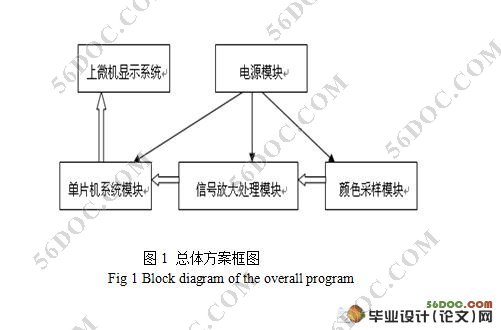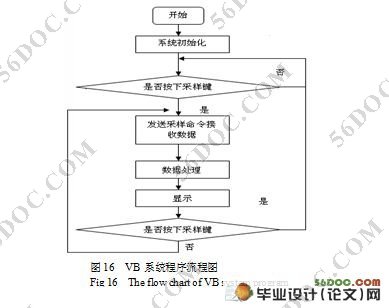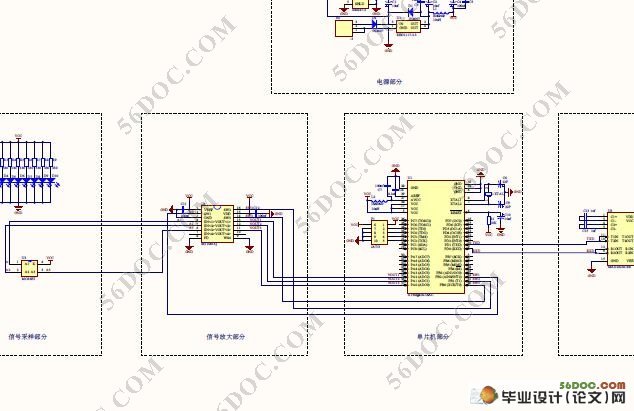高智能颜色识别系统的设计(附程序,电路原理图,PCB图)
无需注册登录,支付后按照提示操作即可获取该资料.
高智能颜色识别系统的设计(附程序,电路原理图,PCB图)(15000字)
摘 要:由于当今科学技术的高速发展,出现了高智能、高精度、高效率机器人,其在国民生产、生活中发挥了越来越重要的影响,受到了各国领导的重视,现被世界上多数国家列为国家重点发展战略之一。而机器人颜色识别技术是人工智能技术中重要的一环,它使机器人控制对象由单一的黑白控制转向多色控制,且控制对象更加接近自然色彩,从而使控制对象的范围更广泛。本设计通过利用MCS3BT的传感器对颜色采样,再利用Atmega16的单片机对所采样的数据进行处理,然后传送到PC机进行进一步处理,最后通过运用建立颜色数据的方式确定并显示颜色的类别。http://www.56doc.com 咨询QQ:306826066
关键词:机器人;MCS3BT传感器;MT104CQ放大器;Atmega16的单片机;颜色识别
Design of Intelligent Color Recognition System
Abstract: As the rapid development of science and technology today, there has been the robot with high intelligence、high accuracy and high efficiency.and its gross national product life played an increasingly important influence. by the national leadership's attention, most of the world is now being as one of the key national development strategies. The color recognition technology is an important part of the artificial intelligence robot technology, it makes the robot control object controlled by a single black and white multi-color control of steering and controls objects closer to the natural color, so that a wider range of control objects。The design of the sensor through the use of MCS3BT color sampling, re-use of SCM Atmega16 sampling of the data processing, and then sent to the PC, for further processing, the final color data through the use of established methods to determine and display the color of the category.
Keywords:robot;MCS3BT sensor; SCM Atmega16 microcontroller;PC;color recognition
总体方案的实现
本设计主要解决的问题有:
(1)色差法识别技术的研究; (2)传感器测试技术的研究;
(3)硬件电路的设计及制作; (4)软件的设计; (5)系统的调试及扩展;
(6)接口电路的设计及信息处理技术的研究;





目 录
摘要 3
关键词 3
1前言 4
2研究的意义 4
3总体方案的实现 5
3.1颜色识别系统设计方案的选择及确定 5
3.1.1识别方法的确定 5
3.1.2颜色识别系统设计方案的确定 6
3.2前沿机选型 6
3.2.1 DSP系列简介 6
3.2.2 ARM系列简介 7
3.2.3单片机系列简介 7
4系统的设计 7
4.1采样模块及处理电路的设计 7
4.1.1MCS3BT的工作原理 7
4.1.2 MCS3BT的特性 8
4.1.3 MCS3BT的典型的光谱灵敏度图 9
4.1.4 MCS3BT的引脚定义 9
4.2信号放大模块的设计 10
4.2.2 MT104CQ 内部结构图 11
4.3单片机模块的设计 12
4.3.1单片机选择 12
4.3.2处理器与其它单片机相比较 12
4.3.3 Atmega16单片机的特点 12
4.3.4引脚配置图与说明 13
4.3.5 Atmega32结构方框图 15
5电源电路设计 16
5.1电源电路设计 16
5.2采样信号电路设计 17
5.3信号放大电路设计 17
5.4 AD模数转换LC网络电路设计 17
5.5单片机电路设计 17
5.6串口通讯电路设计 19
6单片机系统程序的设计及编写 20
6.1单片机系统程序设计总流程图 20
6.2单片机AD模数转换程序设计 20
6.3数字滤波算法的选择 21
6.4串口程序设计 21
6.5单片机在线仿真系统 22
7 VB程序的设计及编写 23
7.1 VB系统程序设计总流程图与界面 23
7.2 VB串口程序设计 23
8 VB程序颜色数据库的建立 24
8.1 在VB工程中添加对Excel类型库德引用 25
8.2 引用Application对象 25
8.3 Application对象常用的属性及方法 25
9数据的采集 26
10结束语 27
参考文献 28
致 谢 28
附录 29
附录
附录1 单片机参考程序
附录2 VB参考程序
附录3 硬件设计总电路原理图
附录4 程序总流程图
附录5 硬件设计PCB图
